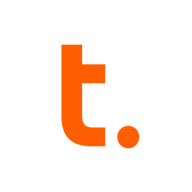

SQL Server and Teradata both compete in the database management and analytics space. SQL Server appears to have the upper hand due to its cost-effectiveness and community support, contrasting with Teradata's premium pricing.
Features: SQL Server offers dynamic resource allocation for adaptive disk and memory usage, Graphical Query Analyzer for interactive query building, and robust OLAP services for data warehousing and decision support. Teradata provides high scalability, complex query processing capabilities, and a massively parallel processing architecture, which is ideal for large datasets and in-depth data analytics.
Room for Improvement: SQL Server could improve its compatibility with non-Windows platforms, reduce costs, and bolster open-source feature offerings. Enhancements in installation processes, indexing, and horizontal partitioning would also be beneficial. Teradata requires better cloud integration, enhanced scalability, and improved user interfaces. It should also offer better support for unstructured data and a more competitive pricing strategy.
Ease of Deployment and Customer Service: SQL Server offers flexibility in deployment from on-premises to various cloud models, supported by a strong community. However, the responsiveness of customer service may vary. Teradata focuses on large enterprises with advanced deployment capabilities, offering substantial support at higher costs. SQL Server excels in initial customer support and deployment versatility, while Teradata provides high-capacity deployment options.
Pricing and ROI: SQL Server is generally considered cost-effective, offering flexible scalability for small-to-medium enterprises with varied licensing models aimed at keeping costs lower than competitors like Oracle. Teradata's pricing is positioned on the premium end but promises valuable returns in high-volume data processing scenarios, focusing on performance and analytical capabilities. It delivers high ROI for enterprises necessitating in-depth analytics despite a higher initial investment.
SQL Server is the most cost-effective with good human resource availability to manage it.
All applications need our repository to provide services for our online business or our customers, so the return is good.
With Standard edition, they have saved a ton of money and they are really happy about that.
At least fifteen to twenty percent of our time has been saved using Teradata, which has positively affected team productivity and business outcomes.
Independent research showed that Teradata VantageCloud users achieved an average ROI of 427% across three years with payback under a year, demonstrating the platform's ability to deliver a strong financial return.
We have realized a return on investment, with a reduction of staff from 27 to eight, and our current return on investment is approximately 14%.
I give their technical support a rating of ten out of ten.
There was a time when Microsoft support provided very crisp answers, but over time, they have diluted their support to third parties, leading to a drop in support quality.
When we created support tickets, the experience was very positive.
The customer support for Teradata has been great.
They are responsive and knowledgeable, and the documentation is very helpful.
Customer support is very good, rated eight out of ten under our essential agreement.
The server where we installed it has grown from 64 gigabytes in RAM to 256 gigabytes, demonstrating significant scalability capabilities.
Most of the time, they simply add another node in the availability group.
I can scale both horizontally and vertically without challenges.
Whenever we need more resources, we can add that in Teradata, and when not needed, we can scale it down as well.
This flexibility allows organizations to scale according to their needs, balancing performance, cost, and compliance requirements.
This expansion can occur without incurring downtime or taking systems offline.
There was an issue with memory-optimized tables, but it was resolved in 2025, allowing you to remove that file group, which was not possible before.
All applications supporting SQL Server in my experience work very well across various industries including telecom, finance, banking, ad, entertainment, and workforce management.
Its massively parallel process architecture allows the platform to distribute workload efficiently, enabling organizations to run heavy analytic queries without compromising speed or stability.
I find the stability to be almost a ten out of ten.
The workload management and software maturity provide a reliable system.
It is fine to do a first release that works, but you cannot simply abandon it in the following years without service packs and improvements.
I would appreciate using Microsoft Pro as it can integrate with Excel or, with a simple query, consume information from the database using Microsoft Excel.
When we consider the price for replication in another site, the pricing becomes prohibitive.
I want to highlight two features for improvement: first, storing data in various formats without requiring a tabular structure, accommodating unstructured data; and second, adding AI ML features to better integrate Gen AI, LLM concepts, and user-friendly experiences such as text-to-SQL capabilities.
Unlike SQL and Oracle, which have in-built replication capabilities, we don't have similar functionality with Teradata.
The most challenging aspect is finding Teradata resources, so we are focusing on internal training and looking for more Teradata experts.
Cost savings on human resources for Windows plus SQL Server versus other solutions.
Teradata is much more expensive than SQL, which is well-performed and cheaper.
Initially, it may seem expensive compared to similar cloud databases, however, it offers significant value in performance, stability, and overall output once in use.
Role-based access control (RBAC), strong audit and compliance features, high availability, fault tolerance, and encrypted data at rest and in-transit are key features.
Always On HADR functionality is one of the features that I use on a daily basis and one of my most used features, saving me lots of time, especially since previously I had to build a SQL cluster and Windows clusters that had many dependencies on shared infrastructure, but now with Always On, it is too stable with easy management and almost zero maintenance, which SQL Server handles itself.
I have been working with SQL Server for a long time, and it works well for me as I am using it in different applications, such as web applications, Windows applications, or the data warehouse reporting.
The best features of SQL Server are availability and stability.
Teradata's security helps our organization meet compliance requirements such as GDPR and IFRS, and it is particularly essential for revenue contracting or revenue recognition.
Its architecture allows information to be processed efficiently while maintaining stable performance, even in highly demanding environments.
It facilitates data integration, where we integrate and analyze data from various sources, making it a powerful and high-quality reliable solution for the company.
| Product | Market Share (%) |
|---|---|
| SQL Server | 12.1% |
| Teradata | 4.0% |
| Other | 83.9% |


| Company Size | Count |
|---|---|
| Small Business | 119 |
| Midsize Enterprise | 59 |
| Large Enterprise | 115 |
| Company Size | Count |
|---|---|
| Small Business | 28 |
| Midsize Enterprise | 13 |
| Large Enterprise | 52 |
SQL Server is a relational database management system (RDBMS) by Microsoft. The product's main purposes are to store data and retrieve it as requested by other software applications - on the same computer or on another computer across a shared network. The solution is built on top of Structured Query Language (SQL), which is a standardized programming language used for relational database management.
The product is tied to Transact-SQL (T-SQL), which is an implementation of SQL from Microsoft that adds several proprietary programming extensions to the standard language. SQL Server is built similarly to other RDBMS products, as its structure is a row-based table that connects related data elements in different tables to one another. One of its most important components is the SQL Server Database Engine, as it controls data processing, storage, and security. Beneath the Database Engine is the SQL Server Operating System, which is used for memory and I/O management, locking data to avoid unneeded upgrades, and job scheduling.
The solution has four editions with different sets of services and tools. They include:
The first two are available for free and are typically utilized by smaller companies, as they work with fewer functions and storage. The second two editions are generally used by bigger organizations and enterprises and offer more features.
The solution has several functions through which users can facilitate different data-related processes. These include:
SQL Server Services
SQL Server has a wide range of add-on services that provide additional benefits beyond database management. These services include:
SQL Server Benefits
The solution has many benefits for users. These include the following:
Reviews from Real Users
A president at a consultancy evaluates SQL Server as a veteran solution with critical log shipping feature.
Harkamal S., a user at a manufacturing company, rates SQL Server with a high mark because it is a stable, scalable, and easy-to-deploy solution that pretty much covers everything.
Teradata is a powerful tool for handling substantial data volumes with its parallel processing architecture, supporting both cloud and on-premise environments efficiently. It offers impressive capabilities for fast query processing, data integration, and real-time reporting, making it suitable for diverse industrial applications.
Known for its robust parallel processing capabilities, Teradata effectively manages large datasets and provides adaptable deployment across cloud and on-premise setups. It enhances performance and scalability with features like advanced query tuning, workload management, and strong security. Users appreciate its ease of use and automation features which support real-time data reporting. The optimizer and intelligent partitioning help improve query speed and efficiency, while multi-temperature data management optimizes data handling.
What are the key features of Teradata?
What benefits and ROI do users look for?
In the finance, retail, and government sectors, Teradata is employed for data warehousing, business intelligence, and analytical processing. It handles vast datasets for activities like customer behavior modeling and enterprise data integration. Supporting efficient reporting and analytics, Teradata enhances data storage and processing, whether deployed on-premise or on cloud platforms.
We monitor all Relational Databases Tools reviews to prevent fraudulent reviews and keep review quality high. We do not post reviews by company employees or direct competitors. We validate each review for authenticity via cross-reference with LinkedIn, and personal follow-up with the reviewer when necessary.